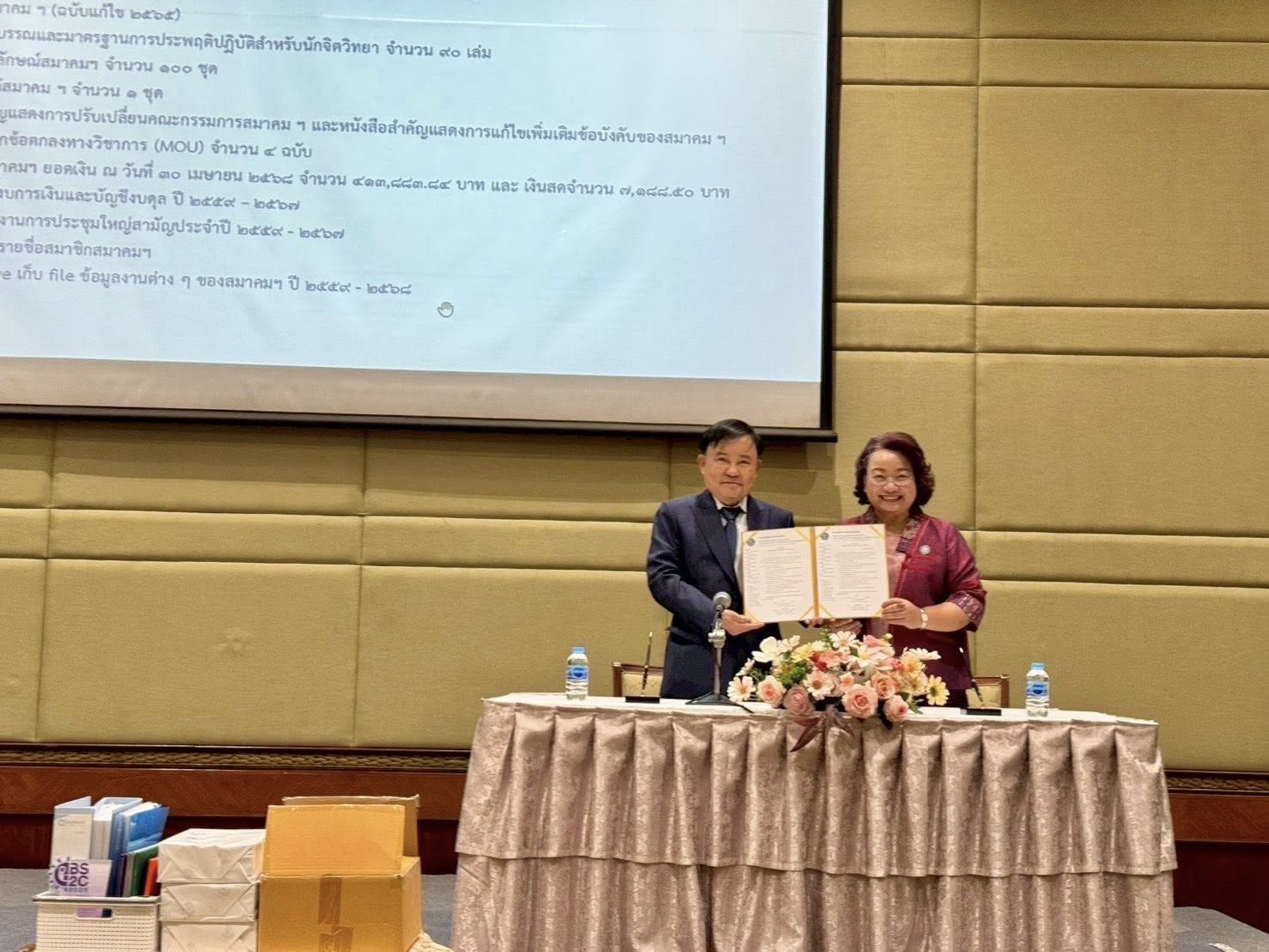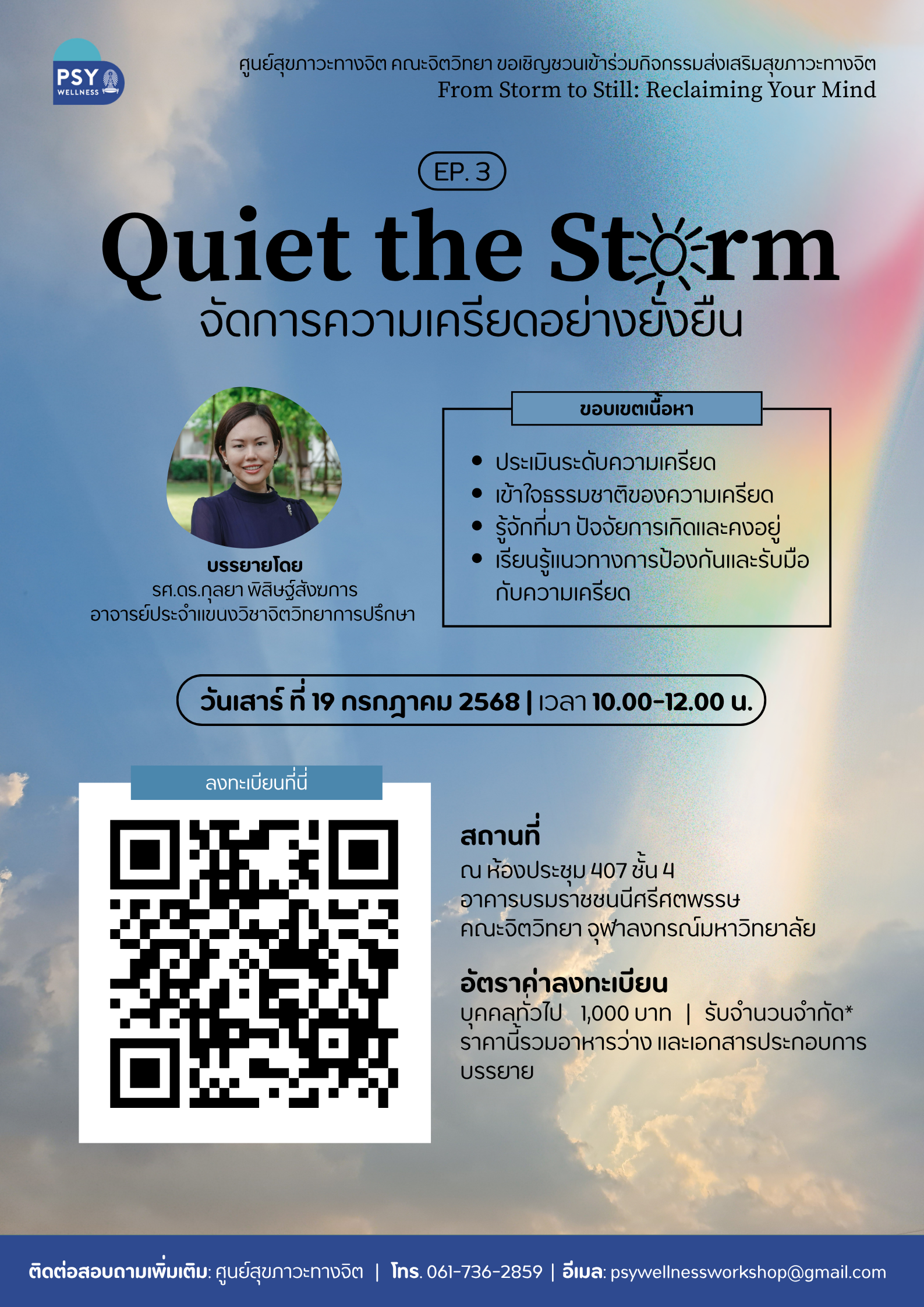ชีวิตคนในยุคนี้ ถึงอย่างไรก็หนีไม่พ้นการเสพสื่อออนไลน์ผ่านหน้าจอมือถือ (ที่แปลว่าพกพาติดตัวไปได้ทุกที่ เสพสื่อกันได้แบบไม่จำกัดเวลาและสถานที่) การดูสื่อ วิดีโอ content ต่าง ๆ ผ่านหน้าจอมือถือได้กลายเป็นสิ่งที่อยู่รอบตัวเราโดยไม่มีข้อจำกัดใด ๆ ยกเว้นอินเทอร์เน็ตล่ม หรืออินเทอร์เน็ตหมด
สื่อออนไลน์นั้นมีหลายประเภท บ้างเปิดโอกาสในการเรียนรู้ให้คนดูสื่อได้อย่างกว้างขวาง บ้างเป็นแรงบันดาลใจ บ้างก็มีไว้เพื่อความบันเทิงเท่านั้น กล่าวคือการเสพสื่อนั้นมีทั้งคุณและโทษ ก็สุดแท้แต่ว่าผู้ใช้จะใช้อย่างไร หากใช้อย่างเหมาะสมก็จะส่งเสริมและสนับสนุนชีวิตของคนนั้น ๆ ในทางกลับกันหากใช้อย่างไม่เหมาะสม … ชีวิตก็อาจแย่ได้เช่นกัน
ในมุมมองของจิตวิทยาพัฒนาการ คนในแต่ละช่วงวัยมีแนวทางการเสพสื่ออย่างได้ประโยชน์และโทษแตกต่างกันไปตามขั้นพัฒนาการ บทความนี้จึงอยากชวนผู้อ่านมาทำความรู้จักการเสพสื่อที่เหมาะสมของแต่ละช่วงวัยโดยจะอธิบายควบคู่กับขั้นพัฒนาการทางปัญญาตามทฤษฎีของ Piaget
วัยเด็กทารก (แรกเกิด – 2 ปี)
ตามทฤษฎีพัฒนาการทางปัญญาของ Piaget เด็กวัยนี้อยู่ในช่วง Sensorimotor stage ซึ่งเรียนรู้ผ่านประสาทสัมผัส อย่างการมอง การฟัง การสัมผัส และการพยายามเลียนแบบคนรอบข้างตามที่เคยเห็น ซึ่งสมองของเด็กวัยนี้จะได้รับประโยชน์ที่สุดจากประสบการณ์ตรง ดังนั้นสื่อหน้าจอที่ไม่ตอบโต้กับเด็ก แต่เพียงแค่มีตัวการ์ตูนวิ่งไปมาในหน้าจอ 2D จึงไม่ได้ให้ประโยชน์อะไรแก่เด็กวัยนี้
งานวิจัยพบว่าเด็กช่วงอายุ 2 ขวบปีแรกจะยังมีข้อจำกัดที่เรียกว่า Video Deficit Effect หรือคือการเด็กเรียนรู้จากวิดีโอได้แย่กว่าเรียนรู้จากการปฏิสัมพันธ์กับคนจริง ๆ สาเหตุหลัก ๆ อาจมาจากการที่เด็กยังแยกแยะของจริงกับภาพในจอไม่ได้ และเด็กวัยนี้เรียนรู้จากคนที่เขามีปฏิสัมพันธ์ด้วย เช่น การมองจ้องตากัน ผู้ใหญ่พูดเสียงสูงบ้างเสียงต่ำบ้าง แล้วเว้นจังหวะ รอให้เด็กส่งเสียงตอบกลับมา เป็นต้น การที่วิดีโอไม่ได้โต้ตอบกับเด็กไม่สามารถช่วยให้เด็กวัยนี้เรียนรู้หรือทำตามได้ โดย Video Deficit Effect นี้จะเริ่มหายไปเมื่อเด็กอายุเข้าประมาณ 2 ปีครึ่ง
ข้อแนะนำของ American Academy of Pediatrics (AAP) ได้เสนอว่าเด็กวัยแรกเกิดถึง 2 ปี ไม่ควรดูหน้าจอเลย ยกเว้นการวิดีโอคอลที่เป็นการสื่อสาร 2 ทาง มีการพูดคุยโต้ตอบ โบกไม้โบกมือให้เด็ก ซึ่งก็สอดคล้องกับทฤษฎีทางจิตวิทยาพัฒนาการตามที่ได้กล่าวไปแล้ว
วัยเด็กเล็ก (2 – 7 ปี)
เมื่อผ่านพ้นช่วงวัย 2 ขวบปีแรกมาแล้ว Piaget เรียกขั้นพัฒนาการในช่วงวัยนี้ว่า Preoperational stage ซึ่งเด็กวัย 2 – 7 ปี จะเริ่มเข้าใจว่าภาพ สัญลักษณ์ และภาษา สามารถเป็นตัวแทนในการสื่อถึงสิ่งต่าง ๆ ได้ จึงเป็นช่วงวัยที่เริ่มได้ประโยชน์จากการดูสื่อหน้าจออยู่บ้าง แต่อย่างไรก็ตามเด็กช่วง 2 – 7 ปี นี้ก็ยังต้องการการอธิบายและการเรียนรู้ผ่านประสบการณ์จริง และการเล่นตามจินตนาการเป็นหลักอยู่ดี เพื่อเสริมความรู้ และความเข้าใจในคน สัตว์ สิ่งของ และเพื่อฝึกทักษะต่าง ๆ ที่จำเป็นต่อการดำเนินชีวิตในโลกความเป็นจริง
สื่อที่เหมาะสมกับเด็กช่วงวัยนี้อาจเป็นสื่อการ์ตูน ตุ๊กตาสัตว์ต่าง ๆ หรือจะเป็นคนจริง ๆ ก็ได้ มีเนื้อเรื่องไม่ซับซ้อน เข้าใจง่ายตรงไปตรงมา และมีปฏิสัมพันธ์กับเด็ก เช่นมีการเว้นจังหวะเพื่อให้เด็กหาของในหน้าจอ แล้วจึงหยิบของสิ่งนั้นมาจริง ๆ ให้เด็กดู ใช้คำพูดซ้ำ ๆ ใช้เสียงสูงเสียงต่ำเรียกความสนใจจากเด็ก พูดชัดถ้อยชัดคำ มีการแสดงออกที่ชัดเจน (เล่นใหญ่) ดีใจก็ให้เห็นชัดว่าดีใจ มีความสุข ถ้าบทเศร้าก็แสดงให้ชัดว่าเศร้า หรือเสียใจ พร้อมพูดระบุอารมณ์ที่แสดงให้ชัดเจน เป็นต้น
AAP แนะนำว่าในช่วงวัย 2 – 7 ปีนี้ ให้ใช้หน้าจอได้ไม่เกิน วันละ 1 ชั่วโมง โดยอาจแบ่งเป็นครั้งละไม่เกิน 15 – 30 นาที และผู้ใหญ่ควรอยู่ด้วยเพื่อช่วยเชื่อมโยงเนื้อหาในสื่อกับชีวิตจริง เช่น ถ้าดูคลิปสัตว์ อาจถามคำถามเสริมว่า “เคยเห็นตัวนี้ไหม?” หรือชวนคุยชวนคิดด้วยเรื่องง่าย ๆ เช่น “สัตว์ตัวนี้ส่งเสียงร้องยังไงน้า” เป็นต้น หรือถ้าเป็นสื่อแบบเด็กมีปฏิสัมพันธ์ได้ด้วย เช่นให้หาของ แทนที่จะหาของจากแค่หน้าจอ ก็ให้เด็กลองหาของชิ้นนั้นในบ้านจริง ๆ ดู (ถ้ามี) เพื่อให้สมองของเด็กเกิดการเชื่อมโยง สร้างความเข้าใจ ไม่ใช่จดจำภาพหรือเพื่อความเพลินตาเฉย ๆ
นอกจากนี้ เด็กวัยนี้เป็นวัยที่ตรรกะการคิดเชิงเหตุผล แบบวิทยาศาสตร์ยังพัฒนาไม่เต็มที่ ทำให้มีข้อจำกัดในการแยกแยะสิ่งที่เห็นในสื่อกับความเป็นจริง ผู้ปกครองและเราผู้ใหญ่จึงควรระมัดระวัง และช่วยเป็นหูเป็นตาเรื่องการเข้าถึงสื่อของเด็ก และช่วยกันสอดส่องไม่ให้เด็กไปเลียนแบบพฤติกรรมที่เป็นอันตราย ดังคำกล่าวที่ว่า เลี้ยงเด็กหนึ่งคน ใช้คนทั้งหมู่บ้าน ถ้าสังคมปลอดภัยมากกว่าเป็นภัย เด็ก ๆ ของเราก็จะเติบโตได้ดีกว่า และปลอดภัยกว่า
วัยเด็กโต (7 – 11 ปี)
Piaget เรียก พัฒนาการขั้นนี้ว่า Concrete operational stage เป็นขั้นพัฒนาการที่เด็กเริ่มคิดได้อย่างเป็นระบบมากขึ้น มีความเข้าใจเหตุและผลมากขึ้น แต่อาจยังไม่เข้าใจเรื่องที่เป็นนามธรรม หรือสิ่งที่จับต้องไม่ได้ (เช่น การแตกแรงตามกฎทางฟิสิกส์) แต่เด็กจะพอมีวิจารณญาณ มีความเอ๊ะ ความสงสัยว่าสิ่งที่เห็นนี้จริงหรือไม่ได้อยู่บ้าง ในช่วงวัยนี้ ผู้ปกครองอาจเลือกสื่อที่ส่งเสริมการคิดวิเคราะห์ หรือสร้างแรงบันดาลใจให้มากขึ้น (เช่น คลิปวาดรูป ทำขนม เล่นดนตรี เป็นต้น) มากกว่าสื่อที่ให้ความบันเทิง ส่วนสื่อที่เน้นการมีปฏิสัมพันธ์อาจไม่ดึงดูดความสนใจของเด็กวัยนี้เท่าไรแล้ว เด็กวัยนี้จะสามารถเข้าใจสื่อที่มีเนื้อเรื่องซับซ้อนพอประมาณ มีตัวละครเยอะ ๆ แต่ละตัวละครมีความสัมพันธ์ในรูปแบบต่าง ๆ กันได้อย่างสนุกแล้ว (วัยก่อนหน้านี้ก็ดูได้ แต่อาจจะไม่เข้าใจเรื่อง จะเน้นชอบตัวการ์ตูนที่สวย ๆ น่ารัก ๆ แต่อาจยังไม่เข้าใจความสัมพันธ์ของแต่ละตัวละคร) เช่น การ์ตูน animation ต่าง ๆ หรือละครคนแสดง ละครคุณธรรมต่าง ๆ ก็สามารถดูได้อย่างเข้าใจ ได้น้ำได้เนื้อแล้วในช่วงวัยนี้
การอธิบาย หรือชวนคิดชวนคุยก็ยังคงจำเป็นอยู่ แต่อาจใช้คำถามที่ให้เด็กได้คิดวิเคราะห์มากขึ้น เช่น “ทำไมพิน็อคคิโอถึงโกหก” การถามคำถามลักษณะนี้เราอาจไม่ได้หวังคำตอบที่ถูกต้องสมบูรณ์แบบจากเด็ก แต่พ่อแม่จะได้รู้ว่าลูกคิดเห็นอย่างไรต่อเรื่องต่าง ๆ ซึ่งจะช่วยให้เข้าใจพัฒนาการความคิดของลูกได้ดีขึ้น นอกจากนี้เด็กวัยนี้มักเริ่มเล่นเกมหรือใช้โซเชียลมีเดียกับเพื่อน ๆ เริ่มสร้างตัวตนของตัวเองในโลกออนไลน์ เริ่มอยากรู้อยากลองทำอะไรที่คิดว่าเจ๋ง (แต่ความจริงอันตราย)
ดังนั้นการคัดกรองเนื้อหา การจำกัดเวลาใช้สื่อออนไลน์เพื่อความบันเทิงไม่ควรเกิน 1 ชั่วโมงต่อวัน เน้นการมีกิจกรรมอื่น ๆ ที่หลากหลาย การตั้งกติกาในการใช้สื่อออนไลน์ที่ทุกคนในบ้านใช้ร่วมกันจึงเป็นสิ่งสำคัญที่ควรกำหนดและใส่ใจตั้งแต่วัยนี้ และควรสื่อสารให้เด็กเข้าใจว่าความสัมพันธ์ที่ดีในโลกจริงสำคัญกว่าจำนวนคนกดหัวใจหรือการเอาชนะกันในโพสต์ หรือในเกม
วัยรุ่น (11 ปีขึ้นไป)
วัยรุ่นเริ่มเข้าสู่ Formal operational stage ซึ่งสามารถคิดเชิงนามธรรมได้แล้ว มีความเข้าใจต่อสิ่งต่าง ๆ อย่างลึกซึ้งมากขึ้น เริ่มคิดเป็นเหตุเป็นผล เชิงวิทยาศาสตร์ สามารถตั้งสมมติฐานต่อเรื่องต่าง ๆ ได้อย่างเป็นเหตุเป็นผล หรือเรียกว่ามีวิจารณญาณพื้นฐานมากขึ้น แต่อย่างไรก็ตามหากเป็นเรื่องที่ไม่เคยมีคนสอน ไม่เคยมีคนอธิบายเหตุและผล หรือไม่เคยมีประสบการณ์มาก่อน ก็อาจยังเกิดความผิดพลาดจากความรู้เท่าไม่ถึงการณ์ได้อยู่ นอกจากนี้การใช้สื่อออนไลน์จะมีความซับซ้อนมากขึ้นอีก มีกิจกรรมต่าง ๆ ในสื่อออนไลน์ที่คล้ายคลึงกับเนื้อหาที่ผู้ใหญ่เสพมากขึ้น รวมถึงให้ความสำคัญกับการสร้างตัวตนทั้งชีวิตจริงและโลกออนไลน์อย่างมาก ผลการทบที่เกิดจากสังคมออนไลน์ เช่น comment ต่อว่า ด้อยค่า โจมตี มีผลอย่างมากต่อสุขภาวะและมุมมองต่อตนเองของเด็กวัยรุ่น นอกจากนี้การได้รับการยอมรับจากสังคมออนไลน์ก็เป็นอีกสิ่งหนึ่งที่เด็กวัยรุ่นมักโหยหา และอาจยอมทำพฤติกรรมที่เสี่ยงอันตราย เพียงเพื่อให้ได้รับการยอมรับ วัยรุ่นต้องการคำแนะนำ แนวทาง และกรอบในการใช้งานสื่อออนไลน์ อย่างปลอดภัย ไม่เบียดเบียนการนอน การพักผ่อน การเรียน และสุขภาวะ พ่อแม่จึงควรเป็นผู้ฟังที่ดี ไว้ใจได้ มีจังหวะ มีกุศโลบายในการแนะนำและสนับสนุน ไม่ควรห้ามหรือดุตลอดเวลา เพราะ วัยรุ่นต้องการการยอมรับ และมีอิสระในการคิด
ในช่วงวัยนี้อาจไม่ได้มีข้อแนะนำที่ตายตัวว่าวัยรุ่นควรจำกัดการดูสื่อออนไลน์กี่ชั่วโมงต่อวัน เคยมีการตั้งไว้ที่ไม่เกิน 2 ชั่วโมงต่อวัน แต่สุดท้ายโลกความเป็นจริงก็ไม่สารมารถจะจำกัดเวลาในการใช้งานได้ขนาดนั้น เพราะสมัยนี้คนเรา ก็ต้องใช้สื่อออนไลน์ในการทำงาน ทำการบ้าน พัฒนาตัวเองร่วมด้วย งานวิจัยพบว่าแทนที่จะจำกัดเวลาการใช้สื่อออนไลน์อย่างเด็ดขาดในวัยรุ่น ควรใช้วิธี co-viewing หรือ ดูไปด้วยกันและพูดคุยกัน กำหนดจำนวนการใช้สื่อออนไลน์ที่ทุกคนในบ้านทำตามได้ (พ่อแม่เองก็ควรเสพสื่อออนไลน์อย่างพอดีด้วย) และให้มีกิจกรรมในครอบครัวที่หลากหลาย ให้ความสำคัญกับการมีกิจวัตรประจำวันที่สมดุลในครอบครัวจะช่วยให้วัยรุ่นมีพัฒนาการและสุขภาวะที่ดีกว่า

ทุกช่วงวัยมีพัฒนาการเฉพาะที่ต้องการการเรียนรู้จากโลกจริง การวิ่งเล่น การพูดคุย การทำกิจกรรมร่วมกัน และการฝึกทักษะในชีวิตจริง ก็ยังเป็นสิ่งสำคัญมากกว่าและมีผลดีต่อชีวิตในองค์รวมมากกว่าการนั่งหน้าจอโดยลำพัง
สุดท้ายนี้สื่อออนไลน์ไม่ใช่สิ่งต้องห้าม แต่ควรใช้ให้เหมาะกับวัย และอยู่ภายใต้การดูแลและคำแนะนำที่เหมาะสม
รายการอ้างอิง
American Academy of Pediatrics. (22 May 2025). Screen Time Guidelines. Retrieved 13 Jun 2025 from https://www.aap.org/en/patient-care/media-and-children/center-of-excellence-on-social-media-and-youth-mental-health/qa-portal/qa-portal-library/qa-portal-library-questions/screen-time-guidelines/
Anderson, D. R., & Hanson, K. G. (2010). From blooming, buzzing confusion to media literacy: The early development of television viewing. Developmental Review, 30(2), 239-255. https://doi.org/https://doi.org/10.1016/j.dr.2010.03.004
Moreno, M. A., Binger, K., Zhao, Q., Eickhoff, J., Minich, M., & Uhls, Y. T. (2022). Digital Technology and Media Use by Adolescents: Latent Class Analysis. JMIR Pediatr Parent, 5(2), e35540. https://doi.org/10.2196/35540
Orben, A., Przybylski, A. K., Blakemore, S.-J., & Kievit, R. A. (2022). Windows of developmental sensitivity to social media. Nature Communications, 13(1), 1649. https://doi.org/10.1038/s41467-022-29296-3
บทความโดย
อาจารย์ ดร.พิมพ์จุฑา นิมมาภิรัตน์
อาจารย์ประจำแขนงจิตวิทยาพัฒนาการ และผู้อำนวยการศูนย์ Life Di (บริหาร)

























